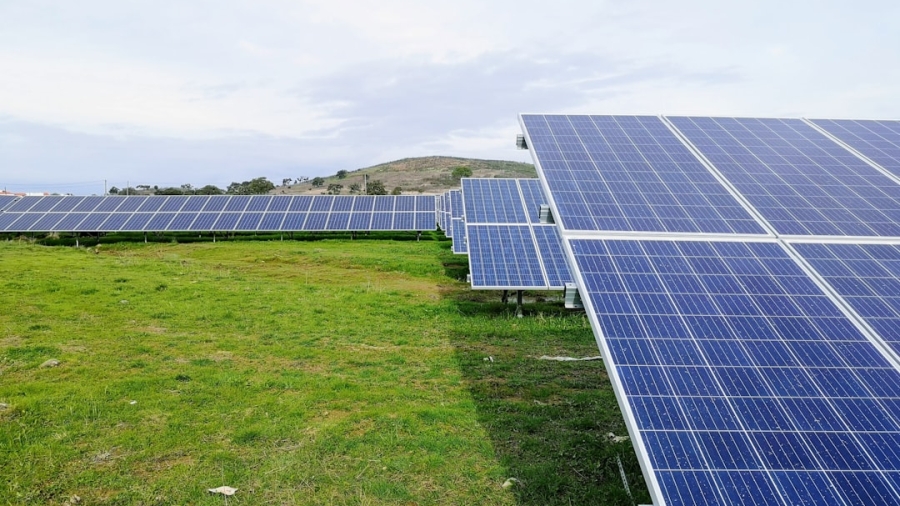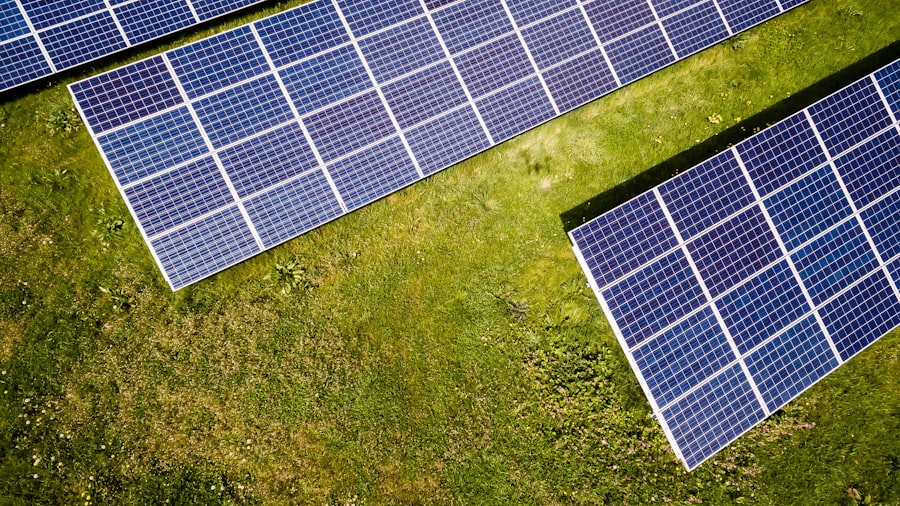The ascent of solar power as a leading renewable energy source has been nothing short of remarkable, driven by significant advancements in photovoltaic (PV) technology. Over the past few decades, the efficiency of solar panels has improved dramatically, with modern cells converting sunlight into electricity at rates exceeding 20%. This leap in efficiency can be attributed to innovations such as bifacial solar panels, which capture sunlight from both sides, and the development of perovskite solar cells, which promise even higher efficiencies at lower production costs.
These technological breakthroughs have not only made solar energy more accessible but have also positioned it as a viable alternative to fossil fuels, contributing to a global shift towards sustainable energy solutions. Moreover, the integration of solar power into everyday life has been facilitated by advancements in installation techniques and materials. The emergence of building-integrated photovoltaics (BIPV) allows for the seamless incorporation of solar technology into the architecture of buildings, transforming rooftops and facades into energy-generating surfaces.
This innovation not only enhances the aesthetic appeal of structures but also maximizes land use efficiency. As governments and private sectors invest heavily in solar infrastructure, the cost of solar energy continues to decline, making it an increasingly attractive option for both residential and commercial applications. The rise of solar power is not merely a trend; it represents a fundamental shift in how we harness energy, paving the way for a cleaner, more sustainable future.
Key Takeaways
- Solar power advancements have led to more efficient and affordable photovoltaic technology.
- Breakthroughs in energy storage solutions, such as batteries and grid technology, are revolutionizing the renewable energy industry.
- Innovations in wind turbine design are harnessing the power of wind more effectively and efficiently.
- Advancements in hydrogen fuel cells are promising for clean energy production and reducing carbon emissions.
- Smart grids and energy management systems are improving efficiency and distribution of renewable energy sources.
Energy Storage Solutions: Breakthroughs in Battery and Grid Technology
As renewable energy sources like solar and wind become more prevalent, the need for effective energy storage solutions has never been more critical. Breakthroughs in battery technology are at the forefront of this evolution, with lithium-ion batteries leading the charge due to their high energy density and decreasing costs. However, researchers are now exploring alternative chemistries, such as solid-state batteries and flow batteries, which promise even greater safety and longevity.
These innovations are essential for addressing the intermittent nature of renewable energy generation, allowing excess energy produced during peak times to be stored and utilized when demand is high or generation is low. In addition to advancements in battery technology, improvements in grid technology are also playing a pivotal role in energy storage solutions. Smart grid systems equipped with advanced sensors and communication technologies enable real-time monitoring and management of energy distribution.
This allows for better integration of renewable sources into the grid, optimizing energy flow and reducing waste. Furthermore, developments in demand response systems empower consumers to adjust their energy usage based on availability and pricing, creating a more resilient and efficient energy ecosystem. Together, these innovations are transforming how we store and distribute energy, ensuring that renewable sources can meet the demands of a growing population while minimizing environmental impact.
Harnessing the Power of Wind: Innovations in Wind Turbine Design
Wind energy has emerged as one of the most promising renewable resources, with innovations in wind turbine design significantly enhancing its viability. Modern turbines are larger and more efficient than their predecessors, capable of harnessing wind energy even at lower speeds. The introduction of vertical-axis wind turbines (VAWTs) offers a new perspective on turbine design, allowing for greater flexibility in installation locations and reducing noise pollution.
These innovations not only increase energy output but also expand the potential for wind farms in urban areas where traditional horizontal-axis turbines may not be feasible. Furthermore, advancements in materials science have led to the development of lighter and more durable turbine blades, which can withstand harsh environmental conditions while maximizing aerodynamic efficiency. The use of composite materials has revolutionized blade design, enabling longer spans that capture more wind energy without compromising structural integrity.
Additionally, predictive maintenance technologies powered by artificial intelligence are being integrated into wind farms to monitor turbine performance and anticipate failures before they occur. This proactive approach not only enhances operational efficiency but also extends the lifespan of wind turbines, making wind energy an increasingly reliable component of our renewable energy portfolio.
The Promise of Hydrogen Fuel Cells: Advancements in Clean Energy Production
Hydrogen fuel cells represent a transformative approach to clean energy production, offering a versatile solution for decarbonizing various sectors, including transportation and industrial processes. Recent advancements in hydrogen production methods, particularly green hydrogen generated through electrolysis powered by renewable energy sources, have positioned hydrogen as a key player in the transition to a sustainable energy future. This process involves splitting water molecules into hydrogen and oxygen using electricity from renewable sources, resulting in zero emissions and a sustainable fuel source that can be stored and transported easily.
Moreover, innovations in fuel cell technology have improved efficiency and reduced costs, making hydrogen a more competitive alternative to traditional fossil fuels. Fuel cells convert hydrogen directly into electricity through an electrochemical reaction, producing only water vapor as a byproduct. This clean energy solution is particularly promising for heavy-duty transportation applications such as buses and trucks, where battery electric vehicles may face limitations due to weight and range constraints.
As infrastructure for hydrogen refueling expands and production methods become more efficient, hydrogen fuel cells are poised to play a crucial role in achieving global climate goals while providing reliable energy solutions across various sectors.
Smart Grids and Energy Management: Improving Efficiency and Distribution
The advent of smart grids marks a significant leap forward in how we manage and distribute energy. By integrating digital technology with traditional electrical grids, smart grids enable real-time monitoring and control over energy flow, enhancing efficiency and reliability. These systems utilize advanced metering infrastructure (AMI) to provide consumers with detailed insights into their energy consumption patterns, empowering them to make informed decisions about their usage.
This level of transparency not only promotes energy conservation but also facilitates demand-side management strategies that can alleviate pressure on the grid during peak times. In addition to improving consumer engagement, smart grids enhance the integration of renewable energy sources into the existing infrastructure. With the ability to manage distributed generation from solar panels and wind turbines effectively, smart grids can optimize energy distribution based on real-time supply and demand dynamics.
This flexibility is crucial for accommodating the variability inherent in renewable generation while ensuring grid stability. Furthermore, advancements in cybersecurity measures are essential for protecting these interconnected systems from potential threats, ensuring that our transition to smarter energy management is both efficient and secure.
Bioenergy and Biomass: Innovations in Renewable Fuel Sources
Bioenergy has emerged as a vital component of the renewable energy landscape, offering innovative solutions for sustainable fuel production from organic materials. Biomass—derived from plant materials, agricultural residues, and waste—can be converted into biofuels through various processes such as fermentation or gasification. Recent advancements in biotechnology have enhanced the efficiency of these conversion processes, enabling higher yields of biofuels while minimizing environmental impact.
This not only provides an alternative to fossil fuels but also contributes to waste reduction by repurposing materials that would otherwise contribute to landfill overflow. Moreover, innovations in biogas production from anaerobic digestion have gained traction as a means of generating renewable energy while managing organic waste effectively. By breaking down organic matter in the absence of oxygen, biogas systems produce methane that can be used for heating or electricity generation.
This dual benefit—energy production coupled with waste management—highlights the potential of bioenergy to contribute to a circular economy. As research continues to explore new feedstocks and conversion technologies, bioenergy stands poised to play an increasingly significant role in our quest for sustainable fuel sources.
The Role of Artificial Intelligence in Sustainable Energy: Advancements in Energy Optimization and Management
Artificial intelligence (AI) is revolutionizing the sustainable energy sector by providing advanced tools for optimizing energy production and consumption. Machine learning algorithms can analyze vast amounts of data from various sources—such as weather patterns, grid performance metrics, and consumer behavior—to predict energy demand accurately and optimize supply accordingly. This capability allows for more efficient operation of renewable energy systems, ensuring that resources are utilized effectively while minimizing waste.
By leveraging AI-driven insights, utilities can enhance grid reliability and reduce operational costs while promoting sustainability. Furthermore, AI is playing a crucial role in enhancing the performance of renewable technologies through predictive maintenance and real-time monitoring. By analyzing data from sensors embedded in wind turbines or solar panels, AI systems can identify potential issues before they escalate into costly failures.
This proactive approach not only extends the lifespan of renewable assets but also maximizes their output by ensuring they operate at peak efficiency. As AI continues to evolve, its integration into sustainable energy management will undoubtedly lead to more resilient systems capable of meeting the challenges posed by climate change while fostering a cleaner future for generations to come.
For those interested in the latest advancements in sustainable energy, it’s essential to stay informed about the broader context of technology and innovation. A related article that might catch your interest is “Unlock Your Creative Potential with the Samsung Galaxy Book Flex2 Alpha.” This piece explores how cutting-edge technology, like the Samsung Galaxy Book Flex2 Alpha, can enhance productivity and creativity. Such innovations are crucial in various fields, including sustainable energy, where technology plays a pivotal role in developing new solutions. You can read more about this topic by visiting the article here.
FAQs
What is sustainable energy?
Sustainable energy refers to energy sources that are renewable and have a low environmental impact. These sources include solar, wind, hydro, and geothermal energy.
What are some innovations in sustainable energy to watch for in the future?
Some innovations to watch for in sustainable energy include advancements in energy storage technologies, improvements in solar panel efficiency, development of smart grid systems, and the use of artificial intelligence to optimize energy usage.
How can sustainable energy benefit the environment?
Sustainable energy can benefit the environment by reducing greenhouse gas emissions, minimizing air and water pollution, and conserving natural resources. It also helps to mitigate the impacts of climate change.
What are some challenges facing the adoption of sustainable energy?
Challenges facing the adoption of sustainable energy include high initial costs, intermittency of renewable energy sources, the need for infrastructure upgrades, and policy and regulatory barriers.
What role does government policy play in the future of sustainable energy?
Government policy plays a crucial role in the future of sustainable energy by providing incentives for renewable energy development, setting emissions targets, and establishing regulations to promote clean energy technologies.



